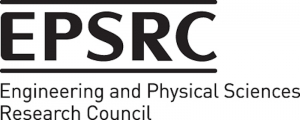1. “Design, modelling and characterisation of 3D printed porous structures”
Principle Investigator: Richard Beckett, PhD candidate, Bartlett School of Architecture, UCL.
Co-Investigators: Mina Bergstad, PhD candidate, School of Chemical Engineering and Analytical Sciences, University of Manchester, Dr Nima Shokri, School of Chemical Engineering and Analytical Sciences, University of Manchester.
This collaboration explores the use of 3D printed porous structures as bio-receptive materials for architectural applications and aims to better understand evaporation in porous media.
The project aims to fabricate an initial series of design typologies including lattice types and pore size arrays using SLS and objet technologies. The team will assess the feasibility of the designs in terms of pore size achievement, strength and practicality of fabrication methods. These models will then undergo analysis and physical testing of fluid transfer through the material. The results will inform the design of a second set of models targeted for specific applications, including being assessed as a viable architectural element.
2. “High resolution printing of electrical interconnects for biomedical, haptics and soft robotic devices”
Principle-Investigator: Dr Manish K Tiwari, Mechanical Engineering, UCL.
Co-Investigator: Prof Shervanthi Homer-Vanniasinkam, Consultant Vascular Surgeon, Leeds General Infirmary
This project is an experimental demonstration to show that copper can be used for metallic interconnects in 3D printing as a low cost alternative to silver and gold based printed interconnects.
It is anticipated that the printed interconnects and sensors developed as a result of this project will have biomedical, robotics and haptics applications. The findings from this experimental demonstration will be an important step in helping to secure larger future funding from other programmes. The long-term goal of the researchers is to develop high-resolution 3D printed pressure sensors for cardiovascular applications.
3. “Printable, stretchable, conductive sensors for dancers, performance and physiotherapy”
Principle Investigator: Dr Sally Day, Electronic and Electrical Engineering, UCL.
Co-Investigator: Prof Sandy Black, London College of Fashion; Thomas Gilbert, PhD student Electronic and Electrical Engineering
This collaboration will examine the best conductors to incorporate in different types of fabrics, and how printable conductive materials can be used in dance costumes and other stretchable materials.
The project will involve the fabrication of a demonstrator of a sensor network that will be used to initiate discussions with a number of potential stakeholders including those in the field of dance and healthcare. The sensors will help to obtain data that will be useful for performance but also aiding physiotherapists who work with dancers. It is anticipated that the results will also have broader healthcare applications, including general physiotherapy and movement disorders.
4. “3D Printing of metal for prosthetics”
Principle Investigator: Elliott Magee, MPhil Medical Physics and Biomedical Engineering, UCL
Co-Investigator: Dr Graham Pullin, Duncan of Jordanstone College of Art and Design, Dundee University
This pilot study aims to test the feasibility of using an alternative printer to 3D print metals in a cheaper way than is currently available. It is anticipated that finding a cheaper alternative would be hugely beneficial in the making of prosthetics as it would expand the palette of metals and alloys available, which will allow for improved bespoke fabrication.
The first stage of the project will demonstrate that metal and resin structures can be printed using the alternative printer. The second stage will demonstrate that these objects can be sintered to produce a finished porous metal object. The third stage will attempt to use various metal and resin combinations to find optimal print outcomes. Abstract hands will be produced in collaboration with Dundee University.
5. "Co-Lab Biomaterials workshops"
Principle Investigator: Dr Brenda Parker, Biochemical Engineering, UCL.
Co-investigators: Prof Buzz B. Baum, Crick Institute; Paloma Portela Torres, Molecular Biology BA, UCL; Lena Asai Design BA, Goldsmiths; Juan Manuel Garcia Arcos, MSc, CRI, Paris; Ke Fang PhD, CRI, Paris.
This collaboration consists of a series of two hands-on workshops that will bring together artists, designers and scientists to meet and initiate collaboration to explore the possibilities of biological design.
The objectives of the workshops are to:
- create new ideas around the use of new materials in biological applications and the use of biology to create new materials;
- foster further collaboration by creating links between designers, artists and scientists.
The workshops will be led by designers and researchers, will allow space for informal one-to-one exchanges, and will include elements such as:
- introducing participants to natural biomaterials
- short talks by experts
- a design workshop to showcase different methodologies
- small group projects culminating in a prototype, object or proposal.


